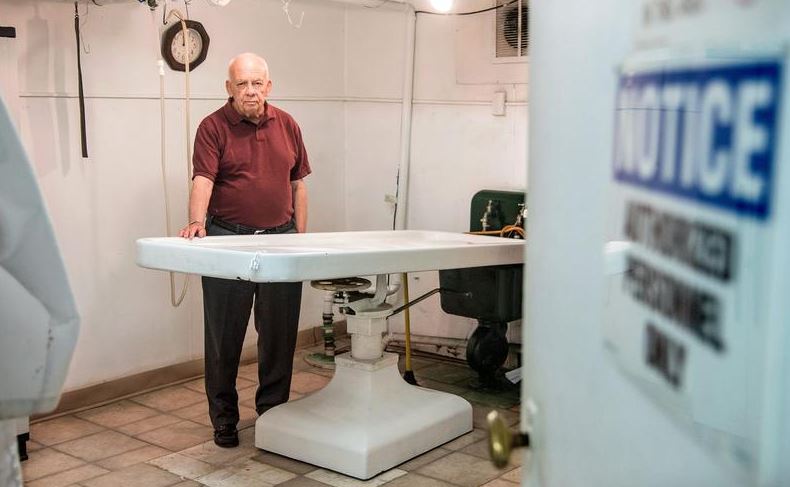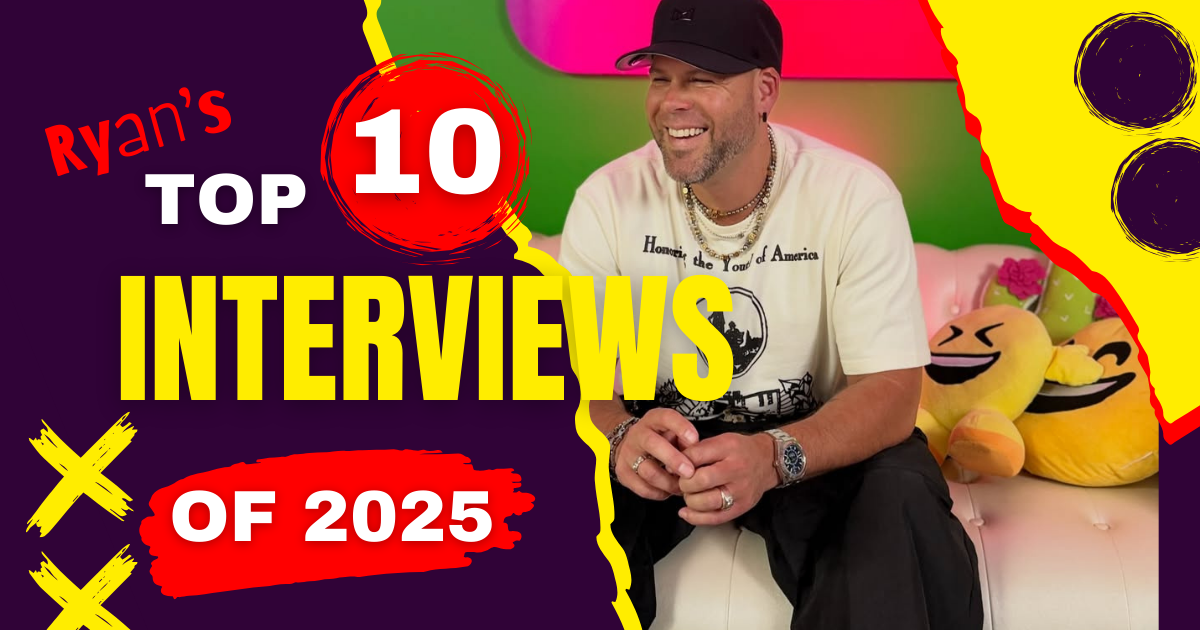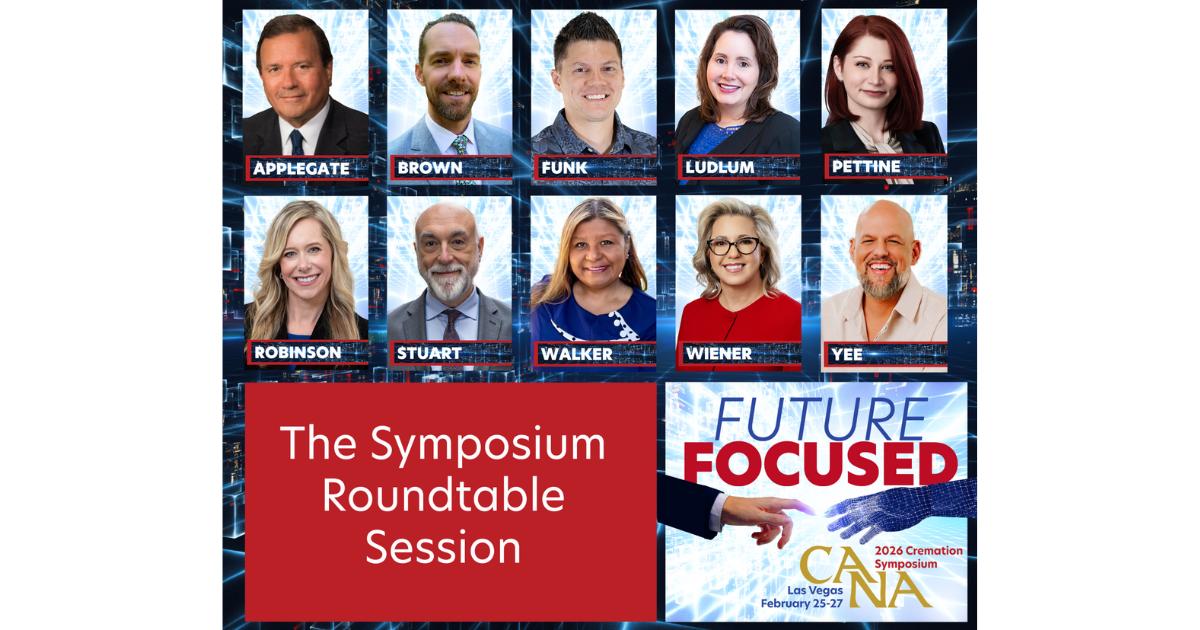Funeral Director Speaks Out About Concerns on Controversial Topic
Article originally appeared on News Gazette
CHAMPAIGN — When the bodies of two of his friends were delivered to his funeral home in downtown Champaign on a single day in June, Chuck Vaughn said he looked at one of them and “about lost it.”
This particular man had been an organ and tissue donor, and his heart, kidney, liver, part of his lung and the long bones of his legs had been surgically removed, or recovered, for donation, said Vaughn, the owner of Heath & Vaughn Funeral Home.
“After Gift of Hope got done with him, his body was mutilated so bad from the neck down, I wouldn’t have known who he was,” he said. “No clue.”
Vaughn said he views Gift of Hope, a non-profit organ and tissue donor network serving the northern three-quarters of Illinois and northwest Indiana, as a life-saving organization — and he’s even a limited organ donor himself. But he’s also been long troubled by the state Gift of Hope donor bodies have been in when they’re brought to his funeral home to be prepared for services and burial.
If you’re imagining something along the lines of post-autopsy, this is more extensive, according to the 72-year-old Vaughn.
He’s seen many autopsies, he said, and he calls the work done by Gift of Hope to recover tissue such as bone, vessels and skin, less dignified and “sloppy” in comparison.
Gift of Hope could be doing a better job on the organ and tissue recoveries, he contends, and on being more transparent with the donors (before they die) and with their families afterward about what to expect.
“I’m very keen on donation,” Vaughn said. “But the dark side of it is, people are not aware of what is happening to their loved one.”
Touchy issue
For funeral homes, this can be a touchy issue. Several area funeral directors declined to answer questions about the Gift of Hope donors they receive, or said they didn’t want to be named in this story.
Jim Weldy, a funeral director at Morgan Memorial Home, Savoy, sees both sides.
Also fire chief for the town of Havana, he said he sees the value of organ and tissue donation and he’s certainly for it. But as a funeral director, he’s also seen “extensive damage” done to the body from tissue recovery, which creates a real problem for embalming, he said.
“The families, we tell them, with the donation in mind, there is a going to be a lot of extra preparation here,” he said.
Weldy said he’s also unlikely ever to complain to Gift of Hope about that.
“Do the benefits outweigh the negatives? Probably,” he said.
Jennifer Kruger, funeral director at Pape Family Funeral Home in Danville, is also a supporter of organ and tissue donation. And she’d be an organ donor because she knows it can save someone’s life, she said, but after what she’s seen as a funeral director, she would never be a tissue donor.
She’d never talk someone out of it, Kruger said, and she does believe Gift of Hope handles donor bodies respectfully. But she wouldn’t want her family to have to live with knowing her body had been through a tissue recovery.
“I don’t think it’s what people expect,” she said.
Funeral directors don’t have to do the embalming on Gift of Hope donors if they don’t want to.
Shaun Martin, manager of forensic and tissue relations for Gift of Hope, said the organization offers funeral homes two choices.
Through contract embalming services the organization works with, Gift of Hope will have its donors embalmed and reconstructed, a process that includes replacing recovered bones with prosthetics and suturing the donor back up, at no charge to the funeral homes, under one condition — the funeral homes can’t then charge the families for this service.
Or, the funeral homes can be reimbursed for their extra time and costs if they choose to do the embalming themselves.
Gift of Hope also offers funeral homes continuing education in an effort to maintain an active partnership with them, Martin said.
“We want to make the family happy, and I know the funeral homes do as well, and it’s only a matter of working with the funeral homes to make that happen,” he said.
Kruger and Weldy said their funeral homes prefer to handle the embalming themselves, and Vaughn said he spurns both of Gift of Hope’s offers.
“I don’t want their money,” he said. “I think it’s hush money.”
About 70 funeral homes do participate in Gift of Hope’s embalming program, though, Martin said. And so far this year, 163 funeral homes have made reimbursement requests for extra embalming costs.
Dan Krabel, funeral director at Krabel Funeral Home in Oakland and Chrisman, is among those taking advantage of Gift of Hope’s embalming service for donors. And he’s found the organization good to work with, he said.
The way he sees it, some organ and tissue donations are extensive and so is the work required to restore the body afterward to the point that it’s going to be viewable by the family and the public.
“Some funeral directors don’t like to do that, but I wouldn’t say that’s a problem or that it’s Gift of Hope’s fault,” he said.
Krabel said he’s not an organ and tissue donor himself because he wants that to be a decision for his wife and family to make when he passes away, but he does believe in donation.
“In my belief system, I believe the body is a temporary shell for my soul and spirit while I’m here on earth, and when I die, if someone here on earth can use something here on earth — my heart, eyes — that’s great,” he said.
Trade-offs
Kevin Cmunt, Gift of Hope’s CEO for the past 2-1/2 years, says his organization hasn’t had many dealings with Vaughn’s funeral home, and he estimated 4 to 6 Gift of Hope donors have been sent there since 2012. Vaughn, however, said he’s handled about 30 Gift of Hope donors over the past decade, but just one would have been enough for him to want to make his concerns public.
While he’s an organ donor himself, Vaughn said, he’s specified only his heart, eyes and ears are available for donation.
Funeral directors are trained to create a sense of peace for the people they serve, he said, but he believes his profession and donor organizations such as Gift of Hope owe the public the truth about what becomes of a human body in donation recoveries, so people can make informed decisions.
Cmunt says Gift of Hope does fully inform everyone from donor to family about what to expect, though he points out it’s important to keep the communication process with donor families in context.
“The person has just died, and the tissue donation we have to start within 24 hours,” he said.
For the donors themselves, making that decision before their deaths, “we tell every person what’s going to happen,” Cmunt said. “What they hear, what they internalize, is individual to each person.”
The way Cmunt and his organization see it, it’s a balance between the benefit of organ and tissue donation and the extra work and time involved, and he believes most people find it a good trade-off.
The other half of the equation to consider is what an organ and tissue donation can mean to a family to whom the death of a loved one is so often a tragic loss, Cmunt said.
“When we can rewrite the end of that story, have their legacy carry on in the lives of others, in the lives of others in their community, that’s a really powerful tool,” he said.
Did you know?
— The major organs that can be donated for transplant include the liver, heart, lungs, kidneys, pancreas and small intestine. Tissues that can be donated are the corneas, bone, saphenous and femoral veins, heart valves and skin.
— Gift of Hope, one of 58 organ procurement networks in the U.S., has coordinated 14,000-plus donations for organ transplant recipients — plus donations for hundreds of thousands of tissue recipients — since 1986.
— Organs have to be removed as soon as possible after the donor has been determined to be brain dead, but while circulation and respiration are being maintained artificially. There is a 12-24-hour window after death to remove tissue.




